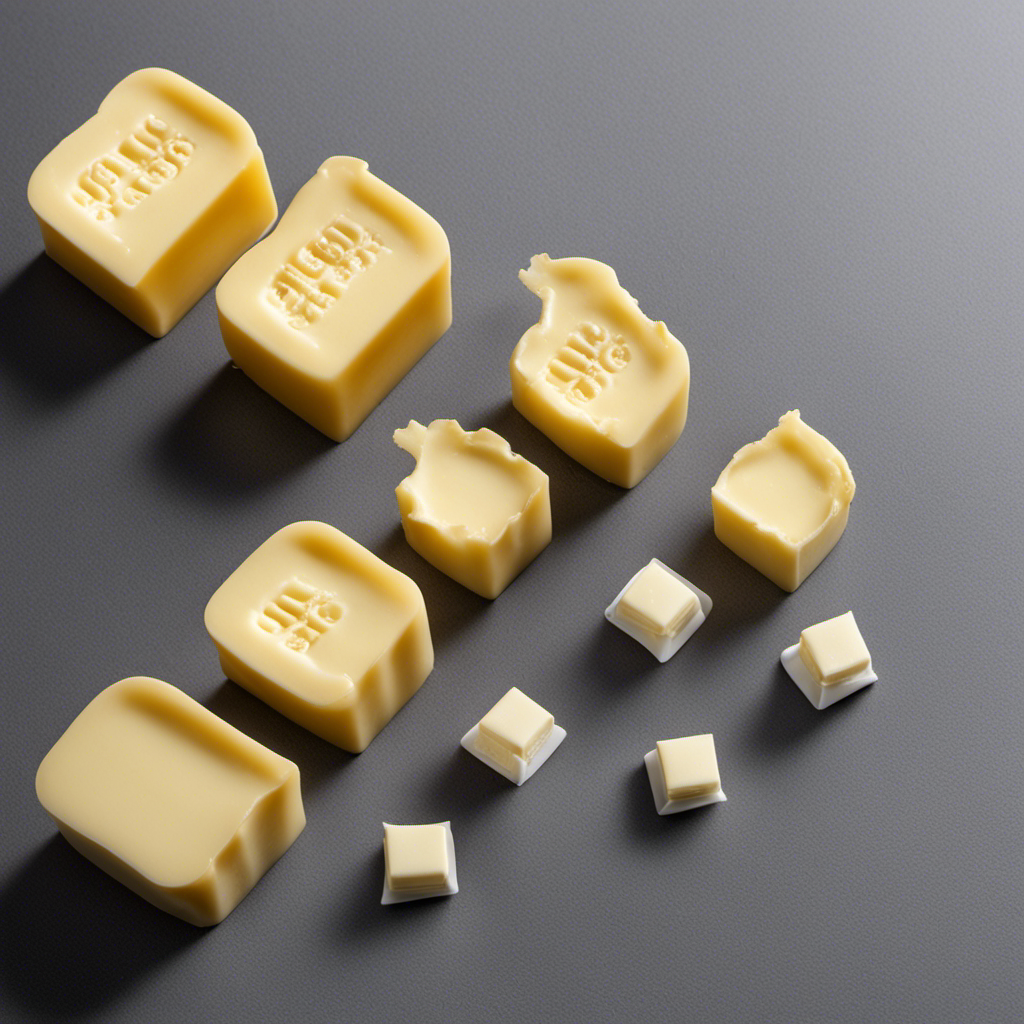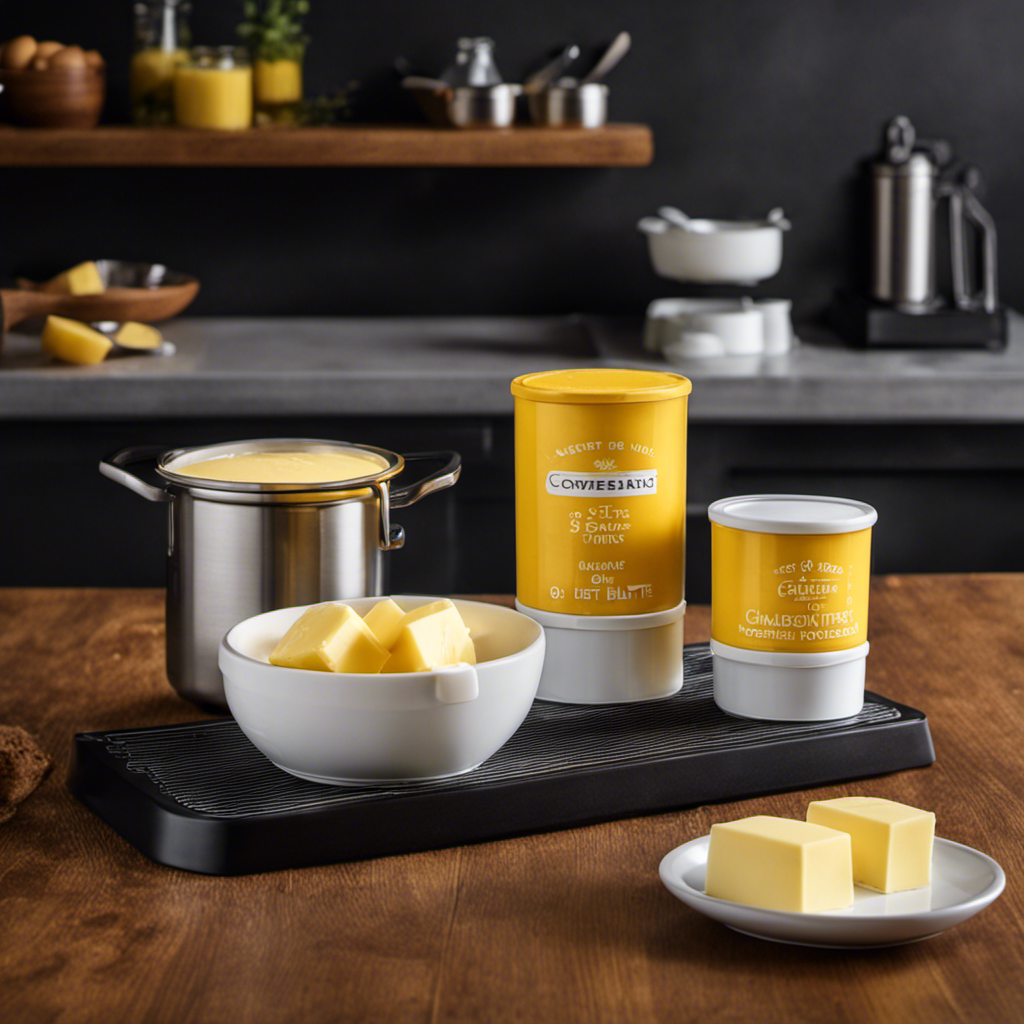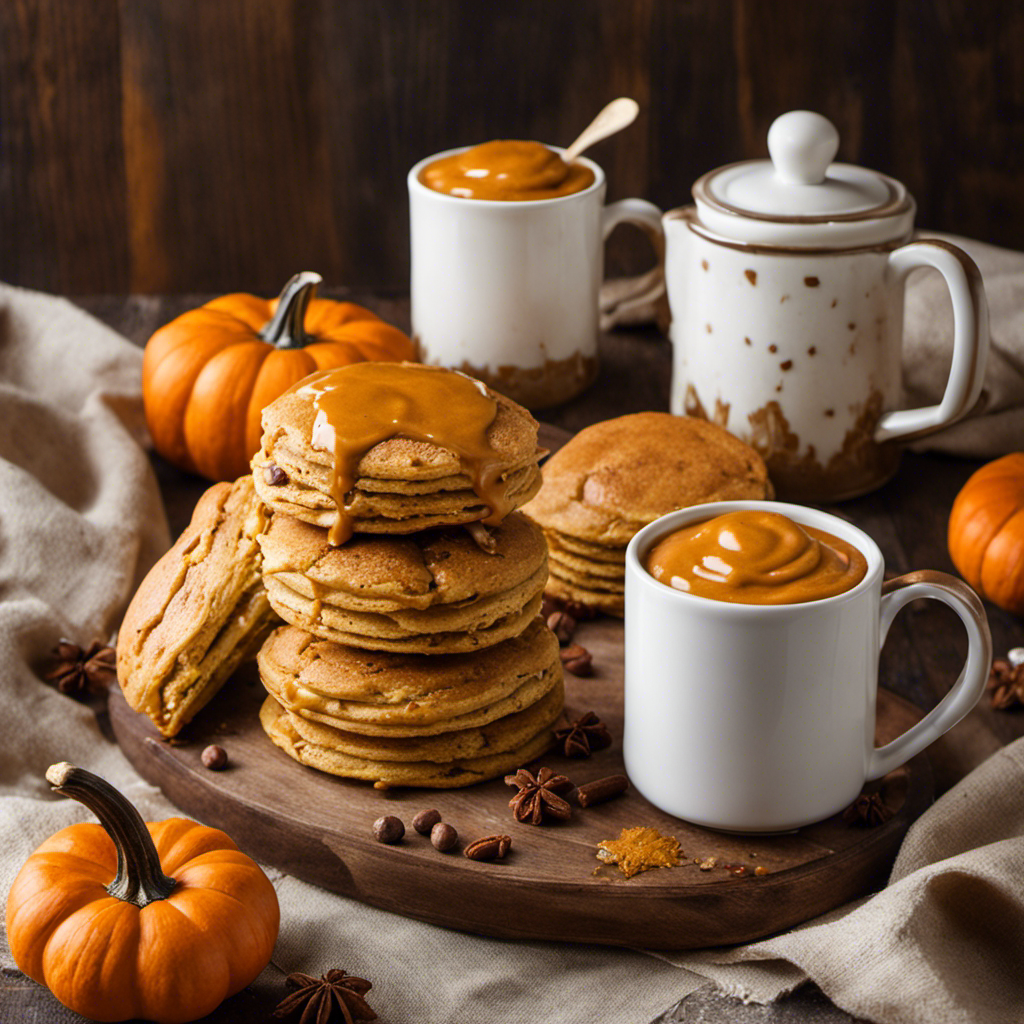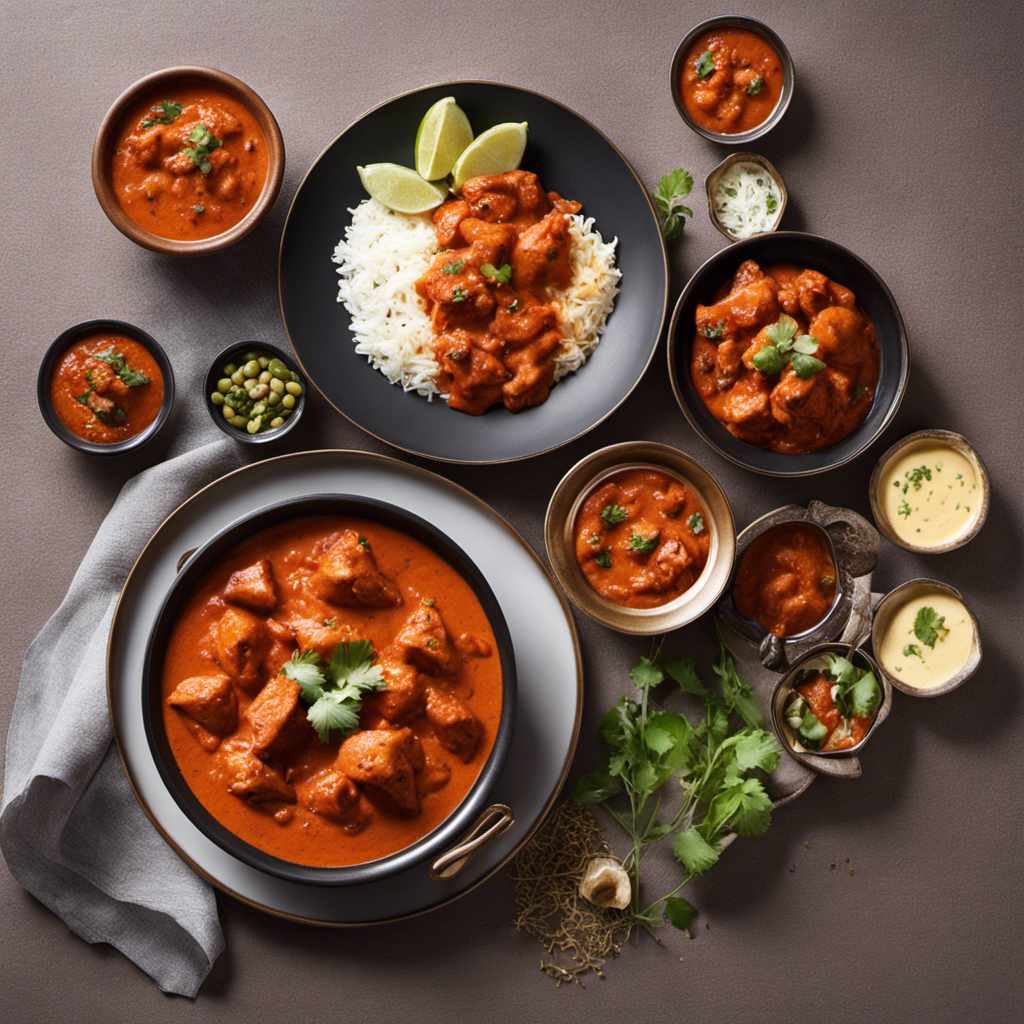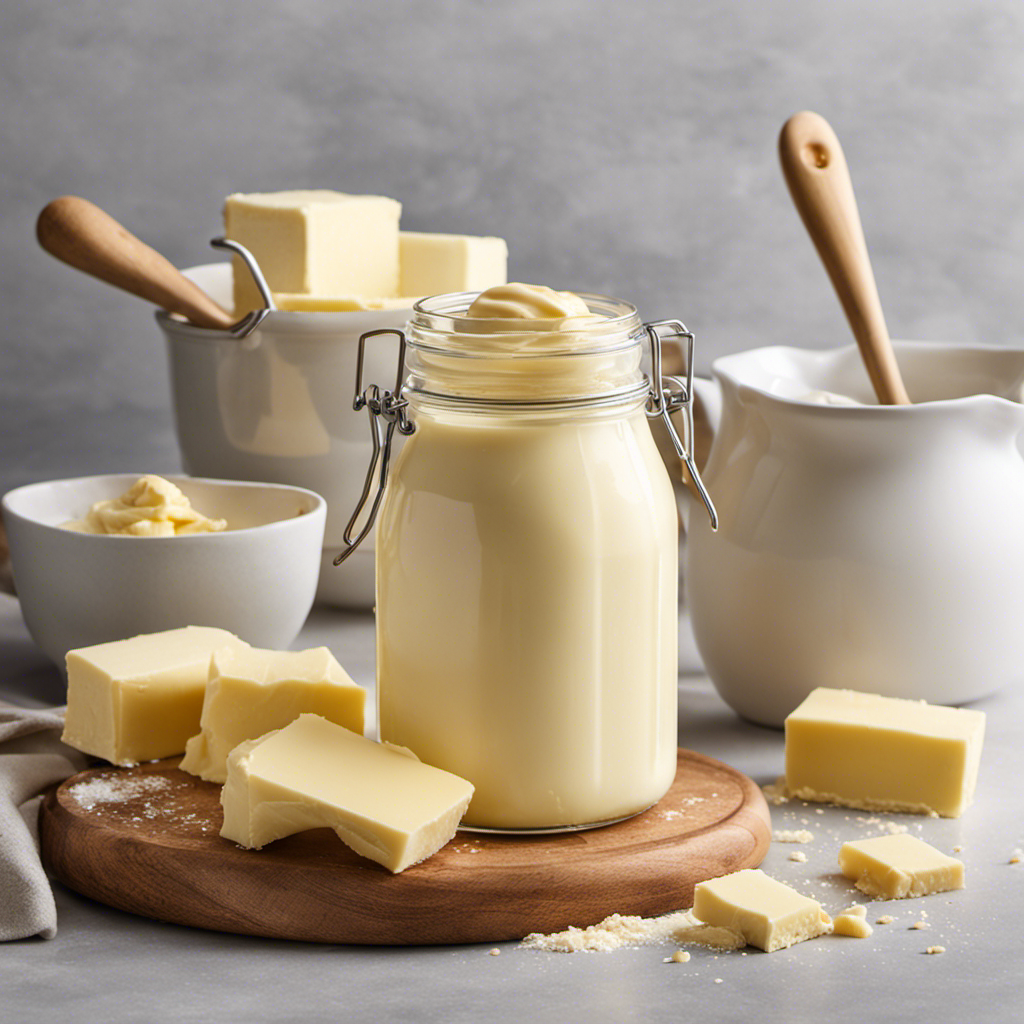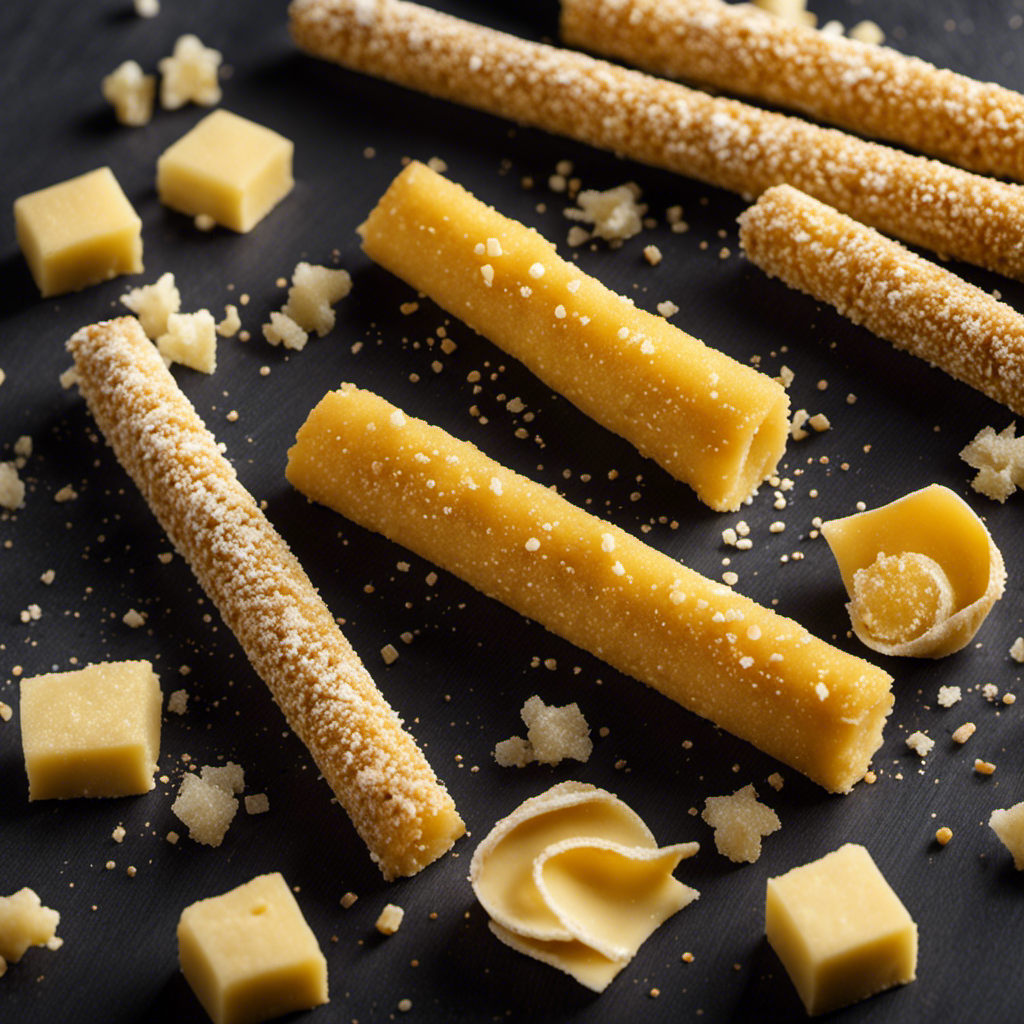I have a baking project in mind that requires 4 sticks of butter. Do you know how many cups that is equivalent to? If you have ever been in this situation, don’t worry!
In this article, we’ll dive into the world of butter measurements and learn how to convert those sticks into cups. With a basic butter-to-cup ratio and a handy conversion chart at your disposal, you’ll be able to confidently measure butter for all your baking adventures.
Let’s get started!
Key Takeaways
- Butter is commonly sold in sticks in the United States, with each stick weighing 4 ounces or 113 grams.
- One stick of butter typically equals 1/2 cup or 8 tablespoons.
- Butter sticks can vary in size depending on the country or brand, so it’s important to check the packaging or consult a reliable source for correct measurements.
- A handy conversion chart or a butter conversion calculator can be used to accurately measure butter in sticks, cups, tablespoons, and grams.
Understanding Butter Measurements
I’m not sure how many cups are in a stick of butter.
Butter measurements can be confusing, but understanding them is crucial for precise baking and cooking.
In the United States, butter is commonly sold in sticks, with each stick weighing 4 ounces or 113 grams. A stick of butter is equivalent to 1/2 cup or 8 tablespoons.
However, in countries like Australia and New Zealand, butter is often sold in 250-gram blocks, which is approximately 1 cup or 16 tablespoons.
If you’ve a recipe that uses grams or tablespoons, you can easily convert the measurements. For example, to convert grams to tablespoons, divide the grams by 14.2.
Knowing these different types of butter measurements will help you accurately follow recipes and achieve delicious results.
Converting Sticks of Butter to Cups
To convert sticks of butter to cups, I’ll need to know the equivalent measurement.
When it comes to converting butter measurements, it’s important to have alternative ways to measure butter accurately. One stick of butter typically equals 1/2 cup or 8 tablespoons. So, if you’ve a recipe that calls for 1 cup of butter, you’ll need to use 2 sticks.
However, it’s worth noting that butter sticks can vary in size depending on the country or brand. In some countries, a stick of butter may equal 1/4 cup or 4 tablespoons. Therefore, it’s always a good idea to check the packaging or consult a reliable source to ensure you’re using the correct measurements.
The Basic Butter-to-Cup Ratio
The conversion ratio for butter to cups can vary depending on the size of the stick. Here is a breakdown of the basic butter-to-cup ratio:
-
Standard stick of butter (1/2 cup): This is the most common size of butter stick, and it measures 1/2 cup when melted or softened.
-
European-style butter stick (1/4 cup): European-style butter sticks are commonly found in specialty grocery stores. They measure 1/4 cup when melted or softened.
-
Salted butter stick (1/2 cup): Some brands offer salted butter sticks, which also measure 1/2 cup when melted or softened.
-
Unsalted butter stick (1/2 cup): Unsalted butter sticks have no added salt and measure 1/2 cup when melted or softened.
If you need to substitute butter, keep in mind that 1 cup is equal to approximately 227 grams of butter. This can help you determine the amount needed when measuring butter in grams.
Handy Conversion Chart for Butter
When melting or softening butter, it’s important to know the different ratios for each type. To make things easier, I always refer to a handy butter conversion calculator that provides accurate measurements.
This tool allows me to quickly convert between sticks, cups, tablespoons, and grams of butter. For example, if a recipe calls for 1 cup of butter and all I’ve are sticks, I can easily determine that I need 2 sticks. Similarly, if a recipe specifies grams of butter and I only have tablespoons, the calculator helps me figure out the right amount.
It’s essential to have this knowledge, as using the wrong measurements can affect the texture and taste of the final product. So, next time you’re working with butter, make sure to consult a reliable butter conversion calculator to ensure your measurements are spot on.
Tips for Measuring Butter in Cups
I find it helpful to use a conversion chart for butter when measuring in cups. Here are some tips to avoid common mistakes and alternative measuring methods:
-
Use a kitchen scale: Weighing the butter in grams or ounces provides the most accurate measurement.
-
Follow the markings on the butter packaging: Many butter packages have markings indicating tablespoon or cup measurements.
-
Use a measuring cup with markings: Look for a measuring cup specifically designed for measuring butter, with markings for sticks or cups.
-
Soften the butter before measuring: If the recipe calls for softened butter, measure it after it has reached room temperature to ensure accurate results.
Frequently Asked Questions
Can I Use Margarine Instead of Butter in This Recipe?
Yes, you can use margarine instead of butter in this recipe. However, it’s important to note that margarine and butter have different compositions, so the taste and texture may vary. In terms of health, it depends on the specific product. When baking with margarine, consider using a brand that is specifically labeled for baking and follow the provided tips and tricks for best results.
How Do I Measure Butter if I Don’t Have Measuring Cups?
I’ve run into the same problem before – measuring butter without measuring cups. It can be tricky, but there are alternative ways to measure it accurately. Let me break it down for you.
Can I Substitute Oil for Butter in a Recipe That Calls for 4 Sticks of Butter?
Yes, you can substitute oil for butter in a recipe that calls for 4 sticks of butter. However, keep in mind that the texture and flavor may be different. Other alternative ingredients for butter include margarine or shortening.
Are There Any Health Benefits to Using Butter Instead of Margarine or Oil?
Using butter instead of margarine or oil has health benefits. Butter contains essential nutrients like vitamins A, D, and E. It also has a higher nutritional value compared to margarine or oil.
How Do I Store Butter to Ensure It Stays Fresh for a Long Time?
To extend butter shelf life, store it in an airtight container in the refrigerator. Keep it away from strong-smelling foods to prevent absorption of odors. Butter can also be frozen for long-term storage.
Conclusion
In conclusion, understanding how to convert sticks of butter to cups is important for accurate measurement in baking and cooking.
One interesting statistic is that 4 sticks of butter is equivalent to 2 cups.
This knowledge can help home cooks and bakers follow recipes more precisely and achieve better results in their culinary endeavors.
